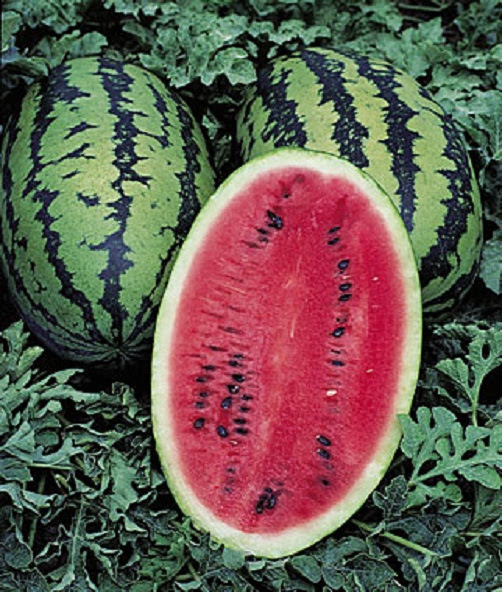|
Memory is a shape-shifting contrivance. In youth, hearing divergent witnesses of an event, we assume that one is a fabrication. As age informs us, such absolutes become slippery. The eye of the beholder innocently experiences that episode from an alternative, if personally-filtered, viewpoint. Still once this wisdom is absorbed, we persist in our allegiance to treasured memories. Childhood summers seem particularly susceptible with hazily golden recollections of aimless meandering, picnics and cookouts; days spent on the edge of a lake or an ocean; and endless games stretched into twilight while in the coolers or submerged in the water’s edge, waited the reddest and sweetest of watermelons. Antithetically, this fruit is thought to have originated in southern Africa’s Kalahari Desert. It was cultivated by the Egyptians as early as 6,000 years ago. King Tutankhamen took watermelon seeds with him to the afterlife. Traders on the Spice and Silk roads carried both melons and seeds across Asia where they were eagerly adopted. Naturally, the Romans propagated it. The Moors introduced the fruit to the Spanish who later took it to the Americas. Native Americans of the Mississippi Valley were planting the melon in the late 16thC. Connecticut farmers have been commercially farming watermelons since 1747. It is hardly surprising that the watermelon is welcome wherever it goes. The watermelon is a natural competitor. Chris Kent still holds the Guiness World Record for the largest watermelon, set in 2013 at 350.5 pounds. The world record for watermelon seed spitting held by Jason Schayot was set in 1995 at 75’ 1”. But the world record for eating watermelon belongs to “Buffalo” Jim Reeves. He ate 13.22 pounds, not including the rind, on July 30th of this year. Contest experts now advise the interested on the minutely analyzed methods of winning including swallowing the seeds and small fast bites. I liked it better when it was just for fun. As is so for all living things, the watermelon has evolved. It is now available in a widely diverse variety of shapes, sizes and colors. All parts of the melon are edible. Dried seeds are a Vietnamese New Year delicacy. In the early 20th C, the rinds were pickled across the States. Such pickles remain popular in the southeast today. Throughout Asia there are many melon soups which are often beautifully served in their own carved shells. Like the cantaloupe, authorities recommend that the watermelon be thoroughly rinsed before cutting. Perfection is hard to top. You really don’t have to do anything with watermelon except eat it. Some people salt their watermelon. It’s good with salt. It’s good without salt. If you are jaded with the red and yellow flesh on its own, there are many ways to dice, slice and embellish the watermelon. Drizzle a squeeze of lime juice over the top of a slice. Watermelon makes a quenching lemonade; a delicious and refreshing smoothie; and a world class granita or sorbet. Our recipe offering today is Watermelon and Feta Salad which makes a light satisfying lunch or a distinctive appetizer.
0 Comments
Leave a Reply. |




